OUT TO PRUNE, WITH WHAT?
Pruning (Book) Perks
One perk of writing a book about pruning (The Pruning Book) is that, in the months after publication, I kept getting gifts in the mail, gifts in the form of pruning tools to try out. The pruning shears hang on a row of wooden pegs near my back door, loppers hang on pegs in the garage, and hand saws fill a five gallon bucket. All the big-name brands are represented, from ARS to Bahco to Corona to Felco to Fiskars to Silky. With many models of each brand of tool at my fingertips, it’s easy to know which ones I like the best. They’re the ones for which I reach most frequently.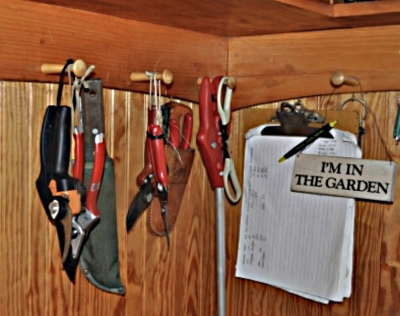
With the coldest part of winter behind us (and even that not very cold), it’s time for me to start pruning. A sunny day with temperatures in the 40s makes pruning an enjoyable excuse to be outdoors. Into my leather holster, which came with the shears, goes my ARS hand pruning shears. Sometimes, if I need to cut stems that are a bit beefier, I’ll grab instead my Felco shears. Or, for lighter pruning, my Pica shears. Those are my three favorites. All are excellent although the ARS shears have the edge for me.
But that’s me. As they say, “Your results (preferences) may differ.”
And Candidates Are . . .

Pruning hardy kiwi
Pruning shears are the tool to have if you’re going to have just one tool for pruning. This is the tool you’ll use for pruning roses and for the majority of cuts on fruit plants, houseplants, and young ornamental trees and bushes.
Better quality pruning shears cost more and are well worth the extra money. Prices can vary from around ten dollars to more than a hundred. “Better quality” can mean many things: a tool made from better materials; a tool designed to cut better under some circumstances; perhaps a tool that is more comfortable to use. This last point –- comfortable to use -– is most important.

The business ends of pruning shears have either anvil or bypass blades. With anvil shears, a sharp blade comes down on a flat, opposing surface. The flat edge is soft metal so as not to dull the opposing sharp edge. By-pass shears, in contrast, work more like scissors, with two sharp blades sliding past each other.
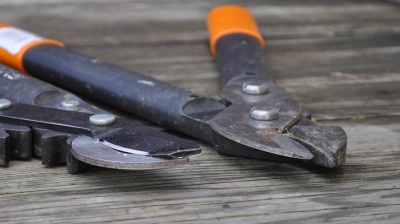
Bypass (L) vs anvil (R) pruning blades1
Anvil shears are generally cheaper than by-pass shears —- and the price difference is reflected in the resulting cut. Too often, anvil blades crush part of the stem at the end of the cut. Plants recover best from clean wounds, but if the two blades do not mate perfectly, the resulting incomplete cut leaves the severed stem hanging on by a thread of bark. That wide, flattened blade also makes it difficult to get the tool right up against the base of the stem you want to remove.
Because a pair of hand shears is such a useful tool — one which you might drop into your back pocket each time you walk out to the garden — check out the weight, the hand fit, and the balance of prospective candidates before settling on one. Can the blades be removed for sharpening or replacement? A by-pass pruner should have an adjustable tension screw, so that the blades can be made to close easily, yet be tight enough so that they do not bind on a stem.
Special features found on some pruning shears might have their appeal. Some shears are tailored to fit small hands or left hands. The blades of some bypass shears are hooked at their ends to help prevent a stem from slipping free of the jaws as you cut. Other shears achieve the same effect with a rolling action of one bypass blade along the other as the handle is squeezed.
A ratcheting action makes it easier to slice through thick stems, but you do have to squeeze repeatedly for a each cut. Shears might ease hand strain by having hand grips that rotate as you make the cut.
Give any pair of pruning shears care and it will give you years of service. Dirt can nick or dull sharp edges, so give the blades an occasional wipe with a oil-dabbed rag. Clean sap off blades with a rag dipped in a solvent such as kerosene. Periodically apply a few drops of oil to the bolt that joins the blades, as well as to the spring that spreads the handles.
Pruning shears cut most easily and quickly if their blades are sharp, and clean cuts heal quickest. On anvil shears, sharpen only one blade, and sharpen it on both sides. On by-pass shears, sharpen both blades, each on its outside edge only.
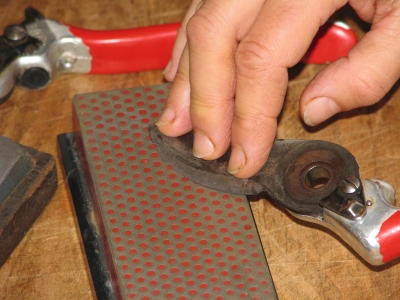
Sharpening Felco shears
Lop or Saw Even though a pair pruning shears is the one tool to have if you’re going to have just one pruning tool, they’re not for pruning everything. Attempting to shimmy and wiggle the tool through branches could hurt both the plant and the shears. Stems huskier than about a half-inch in diameter call for different tools.
So I also grab my Fiskars PowerGear2® Lopper before I walk out the door. What’s nice about this tool is its light weight, fiberglass composite handles and its gearing mechanism which triples the cutting power. Mine has 18-inch handles but they’re also made with longer handles which, though more unwieldy to weave in among branches, provide more leverage for easier cutting.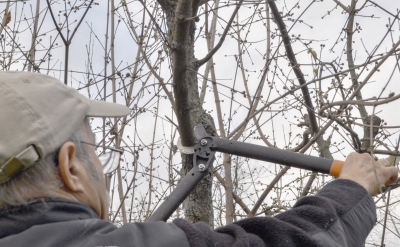
The business end of any lopper is the same as for the shears, bypass or anvil, and, again, I recommend the bypass. The longer handles of the lopper give leverage to slice through branches up around in inch in diameter. Thicker than that and the lopper could be damaged and/or the cut could end up ragged.
So into my back pocket goes a small folding hand saw. Many manufacturers make hand saws. If they have so-called turbo, Japanese, tri-edge, or three-angled blades, they’re all equally good.
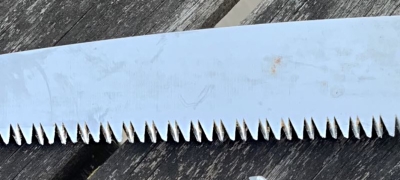
Close-up of tri-cut blade
Carrying those three tools, I can cut just about anything needing to be pruned. 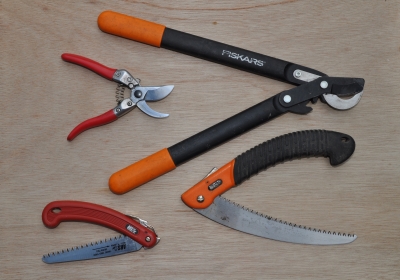

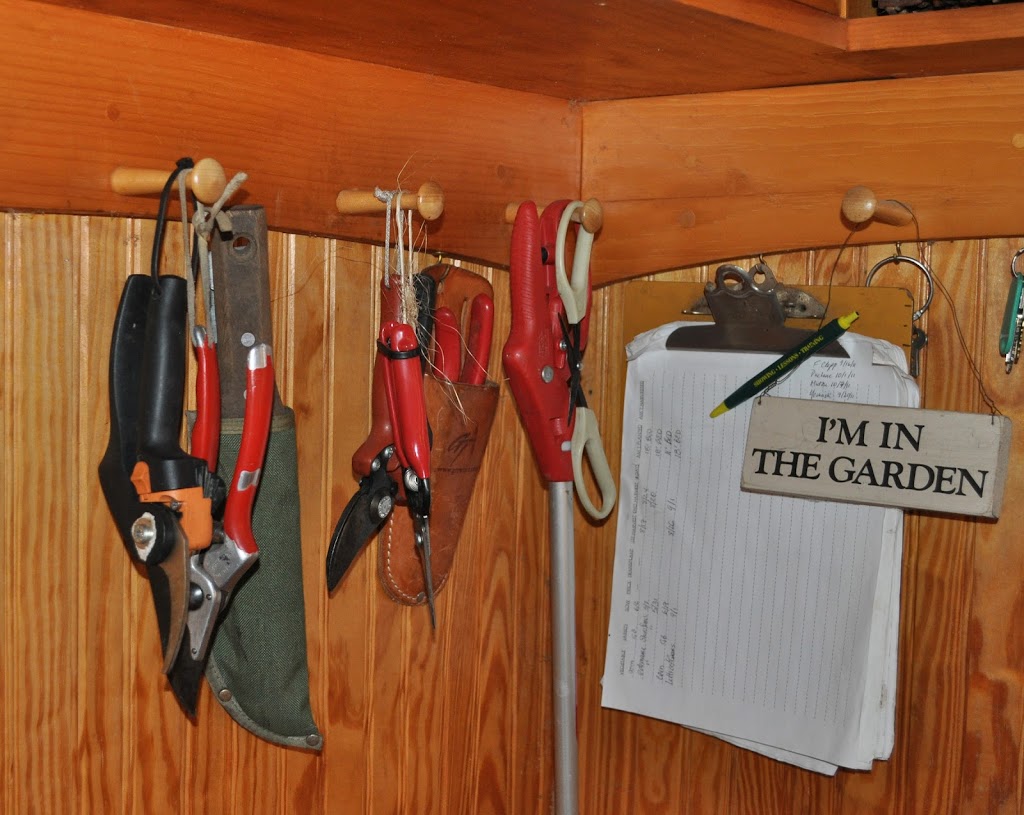


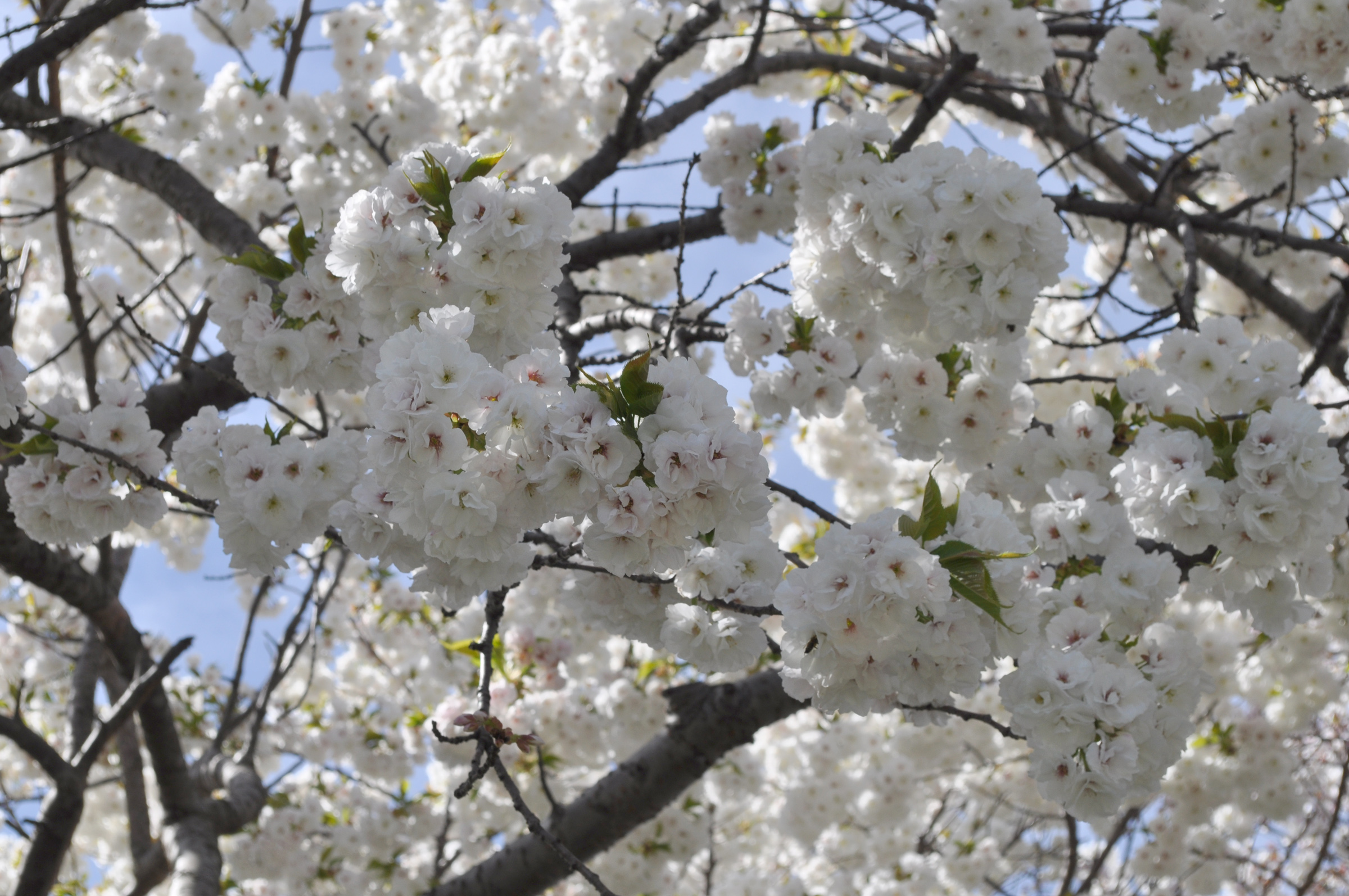
Hands-down, I think the best pruners available to buy are the Felco hand pruners. I have 3 pairs. The oldest ones, that I got abt 40 YEARS ago, are the best. Even though every part is removable, I have never ever done anything in the way of replacing parts. The most that I do is keep the blades clean, and I have some duct tape at the end of one of the handles where the red plastic has worn off. I just love using them.
They are great pruners. Not to compete, but mine are 49 years old!
That’s amazing! I think you got your money’s worth.
Great instruction. Thanks.
Thank you
Good article. In my experience, saws would be as worthy of a detailed review as you have given to secateurs (Felix no8) is my fav -the ergonomics make a difference too!) After trying many saws, the Silky saws are the only that I’ll use. Several times better, cleaner faster cuts, than the many others I’ve tried.
Interesting. They don’t seem that different from each to me. One of them is a Silky.
My son recommended using a battery powered Sawzall (reciprocating saw) to prune some branches that were too big for hand pruning with my trusty Felco pruners. It sure spared my hands and wrists some work, but I am wondering if this is a good option. The cuts looked clean and I cleaned the blade before and after. What do you think?
thanks!
I’ve done that, using a pruning blade that’s available for Sawzills.
Thanks for the explanation! I have minimal experience with pruning and this was very much needed information.
I love the ARS hp-150dx pruners. They are so comfortable I can use them all day. I just ordered another of the same so I’ll have a spare in case.
My favorite loppers are the Fiskars. Again very comfortable to handle for long periods of time and easy to sharpen.
And of course your pruning book is my favorite and is referenced regularly.
Agreed, and especially the last item 🙂
Thank you for your post! I was trying to find the Felco shears and the ARS hand pruning shears which you mentioned on Amazon, however both brands have many different types of shears. Would you mind telling us which styles you are using the most? I have the Fiskars loppers, and a pair of garden trimming scissors and I would like to add these 2 shears to complement my tools for pruning. Thank you.
ARS VS-8 and Felco 2
Thank you.
Do you check the weather forecast for precipitation before you prune? I recently read somewhere (of possibly dubious authority) that it was best to prune when there would be a few dry days in a row to avoid pathogens infecting the recently cut wood, but I don’t remember reading that in your pruning book or other “expert” sources. Worth the worry or just prune any old time in the correct season?
I don’t check the weather but, then again, I never researched the advisability of doing so. I just did a quick search and the advice is not to prune at the beginning or middle of the wet season, where such season’s occur, such as parts of the west coast.